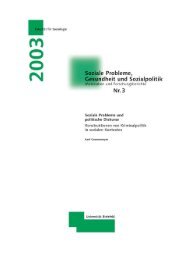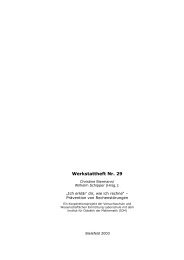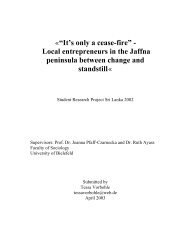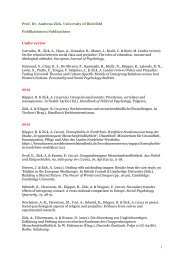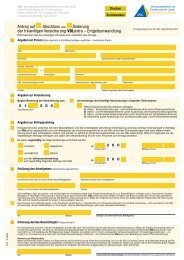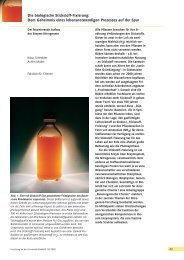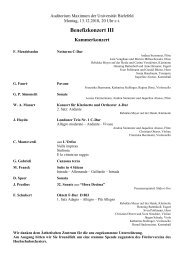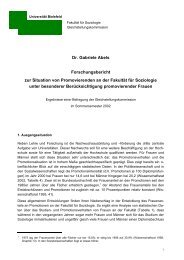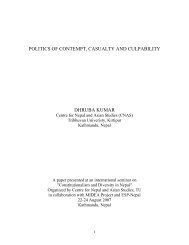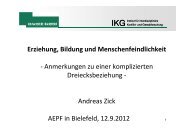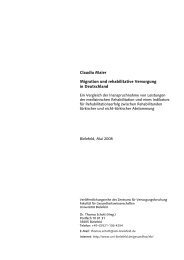Madheshi Nationalism and Restructuring the Nepali State
Madheshi Nationalism and Restructuring the Nepali State
Madheshi Nationalism and Restructuring the Nepali State
You also want an ePaper? Increase the reach of your titles
YUMPU automatically turns print PDFs into web optimized ePapers that Google loves.
<strong>the</strong> three key instruments of <strong>Nepali</strong>zation – monarchy, Hindu religion, <strong>and</strong> <strong>Nepali</strong> language – <strong>the</strong><br />
Madeshi caste people seem conformist with <strong>the</strong> first two instruments but <strong>the</strong>y have consistently<br />
resisted <strong>the</strong> imposition of <strong>the</strong> <strong>Nepali</strong> language <strong>and</strong> hill culture. Nepal democracy survey 2007<br />
reveals that majority of respondents belonging to <strong>Madheshi</strong> castes expressed a preference for <strong>the</strong><br />
retention of monarchy <strong>and</strong> Hindu state. 4 Never<strong>the</strong>less political forces emerging in Madhesh,<br />
including NSP, MJF <strong>and</strong> both factions of TJMM, have adopted a formal position for a republic<br />
<strong>and</strong> a secular state<br />
On language issues, an overwhelming majority of <strong>Madheshi</strong> people, regardless of caste,<br />
ethnicity, or religion, opted for <strong>the</strong> removing <strong>Nepali</strong>’s status as <strong>the</strong> sole official language. In this<br />
spirit, a <strong>Madheshi</strong> scholar has appealed for <strong>the</strong> word ‘Nepalese’ or ‘Nepalbasi’ to be used when<br />
addressing <strong>the</strong> citizens of Nepal because <strong>the</strong> official title ‘<strong>Nepali</strong>’ may be understood to refer<br />
only to those people who speak <strong>Nepali</strong> language as <strong>the</strong>ir mo<strong>the</strong>r tongue (Shah 2007: 1). The rise<br />
of <strong>Madheshi</strong> nationalism over time can also be seen in <strong>the</strong> fact that <strong>the</strong> proportion of people of<br />
<strong>Madheshi</strong> origin (across caste, ethnicity <strong>and</strong> religion) who preferred to identify <strong>the</strong>mselves with<br />
ethnic/regional identity, ra<strong>the</strong>r than with national identity, increased from 19 % in 2004 to 46 %<br />
in 2007. The <strong>Madheshi</strong>’s preference to identify <strong>the</strong>mselves with national identity decreased from<br />
40 % to 18 % over <strong>the</strong> last three years. 5 This same trend was not evident among Pahadis. What<br />
would be implication of <strong>the</strong> rise of ethno-regionalism for <strong>the</strong> national integration of <strong>the</strong> country?<br />
The result of Nepal democracy survey 2007 gives little comfort to secessionists, however an<br />
overwhelming majority of <strong>the</strong> surveyed respondents (more than 90%), including <strong>Madheshi</strong>s to<br />
<strong>the</strong> same extent, said that <strong>the</strong>y were ‘proud’ to belong to <strong>the</strong>ir community <strong>and</strong> also ‘proud’ to be<br />
<strong>Nepali</strong>.<br />
<strong>Madheshi</strong>-Pahadi tension<br />
The Madhesh activism of any form – whe<strong>the</strong>r peaceful movement or armed insurrection – is<br />
temperamentally anti-hill. Is it directed principally at <strong>the</strong> hill-dominated state system or is it<br />
motivated purely by a desire to provoke a communal clash? This is a contested issue. The Chure-<br />
Bhabar Ekta Samaj – a forum of Pahadis people residing to <strong>the</strong> north of <strong>the</strong> Siwalik hills which<br />
appeared in response to <strong>the</strong> Madhesh uprising – claimed that 24 Pahadis were murdered during<br />
<strong>and</strong> after <strong>the</strong> January-February 2007 Madhesh movement. 6 This excludes <strong>the</strong> killing of 27 Maoist<br />
cadres – all Pahadis – in a clash between <strong>the</strong> MJF <strong>and</strong> <strong>the</strong> CPN (Maoist) in Gaur, Rautahat, on 21<br />
March 2007. The TJMM <strong>and</strong> several o<strong>the</strong>r small splinter armed <strong>Madheshi</strong> groups have continued<br />
anti-Pahadi actions in different forms: kidnapping, extortion, killings etc. The TJMM (Jwala<br />
Singh)’s threats against Pahadis staffing <strong>the</strong> administration in Madhesh have had <strong>the</strong> effect of<br />
reducing <strong>the</strong> presence of <strong>the</strong> state in <strong>the</strong> Madhesh.<br />
As stated above, ‘Pahadis out of Madhesh’ (pahadi chor, desh chod) was <strong>the</strong> central slogan of<br />
<strong>the</strong> Madhesh movement. The absence of Pahadis from <strong>the</strong> streets of Janakpur during <strong>the</strong> days of<br />
Madhesh upheavals clearly shows <strong>the</strong> apprehensions of Pahadis residing in Madhesh. A group of<br />
4 Nepal Democracy Survey 2007 was conducted in March-April 2007 in 162 sample polling stations of <strong>the</strong> 41<br />
sample parliamentary constituencies. A structure questionnaire was administered through face to face interview<br />
with a nation wide sample of 4,089 respondents.<br />
5 Ibid; Krishna Hachhethu, <strong>State</strong> of Democracy in Nepal: Survey Report. Kathm<strong>and</strong>u: <strong>State</strong> of Democracy in<br />
South Asia/Nepal Chapter <strong>and</strong> International IDEA, 2004.<br />
6 Rajdhani daily, 7 August 2007.<br />
5



